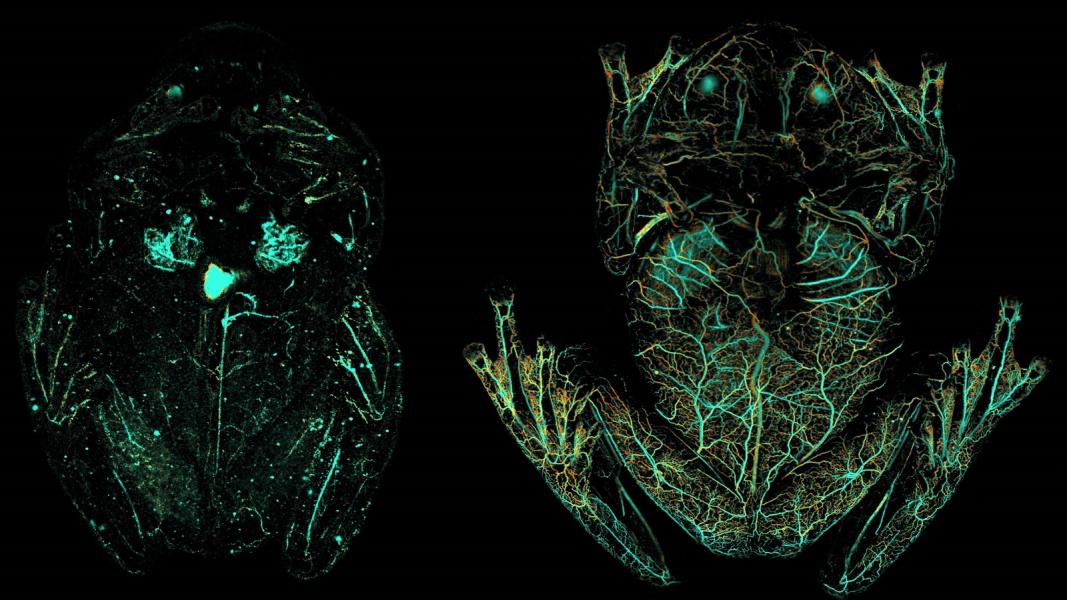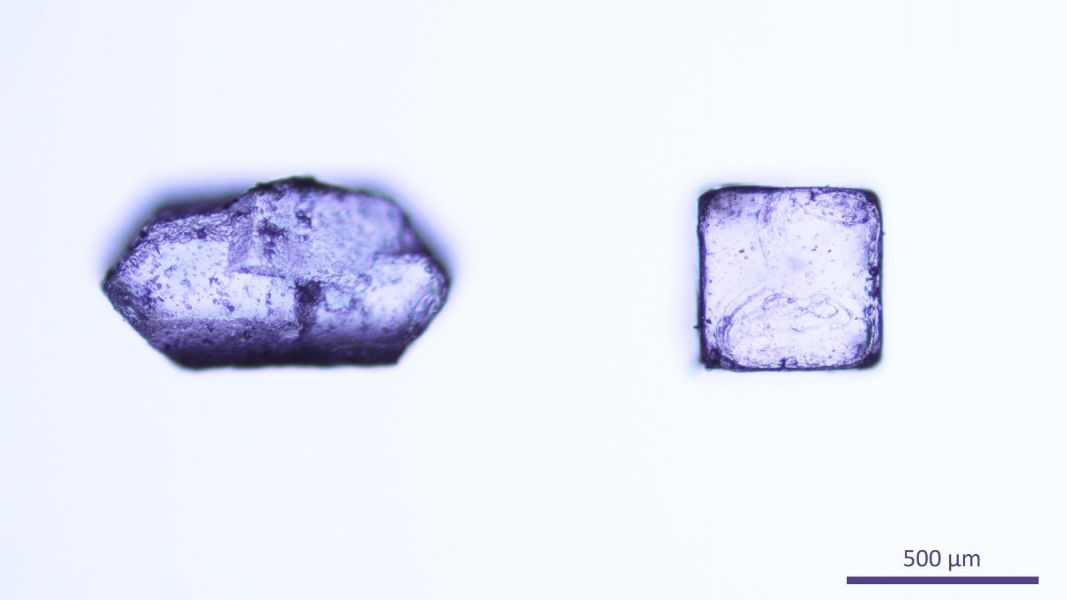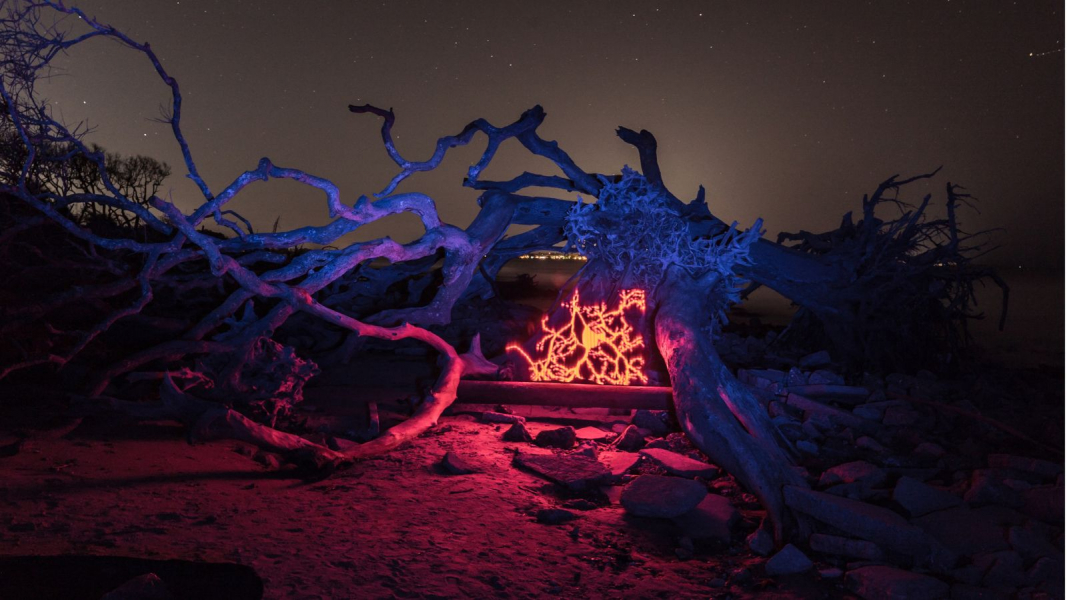The Unseen, Drawn into Focus
The Duke Engineering Graduate Student Council’s annual photo contest continues to surprise and delight
If you thought the annual “Envisioning the Invisible” photo contest would eventually fizzle, running out of fresh subject matter, think again. This year’s winning photos prove that the potential for further discovery is vast—unlimited, even.
Unranked, here are this year’s judge’s choices and the winners of the popular vote. Duke BME nearly swept the contest, contributing five of the six winners.
For several years, the Engineering Graduate Student Council’s annual photo contest entries have been shown in the Fitzpatrick Center Atrium.
During 2023, these images are being showcased in a display adjacent to Twinnie’s Cafe. The winning entries will also appear in rotation on the Sartor Family Media wall in the entrance hall of the Wilkinson Building.
Judges’ Choices
“Packed Particle Fairies”
Lindsay Riley | Post-doctoral Scholar, Segura Lab (BME)

“Data is displayed like art in a museum.”
LINDSaY RILEY
“Our lab creates therapeutic biomaterials made of microscopic packed particles that allow cells to infiltrate into the interstitial void space between particles. To study this invisible space that is hidden within the interior of packed particles, I developed software that analyzes void space characteristics using both real and simulated packed particles.
“This tranquil image showcases what we term ‘Packed Particle Fairies.’ Our utilization of powerful resources for visualization allows us to create this unique and beautiful representation of scientific data, where data is displayed like art in a museum.”
“Glassfrogs Invisibility Cloak”
Junjie Yao | Assistant Professor, BME

Clinging beneath leaves in the jungles of South America, glassfrogs (Hyalinobatrachium fleischmanni) sleep soundly, hiding from predators with a clever trick—they can hide 90 percent of their red blood cells in the liver while sleeping. Photoacoustic microscopy images capture the circulating red blood cells within the same glassfrog while asleep (left image, which renders the frog transparent) and under anesthesia (right image, which breaks blood storage and thus invisibility).
The color scheme shows the percent of hemoglobin bound with oxygen (red means high oxygenation and green means low oxygenation).
“Sweet and Salty”
Akash Singh | PhD student, Mitzi Lab (MEMS)

Sweetness and saltiness stem from the nature and composition of crystals. Sugar is an organic compound called sucrose that crystallizes in a hexagonal pyramid shape, and salt is an inorganic compound called sodium chloride that crystallizes in a cubic shape.
Both are typically found in a bag of chips. Synthetic chemists like to take inspiration from this duo to design a range of hybrid combinations of organic-inorganic crystals with exotic properties, of which taste happens to be one.
Popular Vote Winners
“INCEPTION (A love story)”
Jessi Cruger | Manager, Sommer Lab (BME)

Light painter Jessi Cruger created this image in homage to the contributions that living things make toward research. It began with a research image of a Purkinje cell—a type of neuron—collected by postdoctoral genomics researcher Emily Bowie.
Cruger traveled with the image all the way to Jekyll Island, Ga., to project its essence into the cradling branches of a skeletal driftwood tree using a tool called a Magilight. She used a blue flashlight to “paint” the tree and took this long exposure photograph in real-time.
“BBB on a Chip”
Paris Brown | PhD student, Varghese Lab (BME)
This organ-on-a-chip device uses microchannels (green fluorescent dye) to mimic the brain’s vasculature and a brain chamber (pink fluorescent dye) to mimic its functional tissue. These compartments are lined with cells that form the blood-brain barrier (BBB), a specialized structure that separates the brain and spinal cord from the rest of the body.
The blood-brain barrier protects the brain from harmful substances that might be present in the bloodstream, while still allowing nutrients and other essential molecules to pass through. This device enabled the study of the blood-brain barrier under inflammatory conditions, leading to the discovery of how omega-3 fatty acids can be used as a preventative measure.
